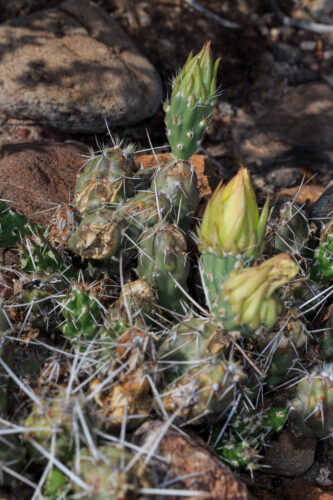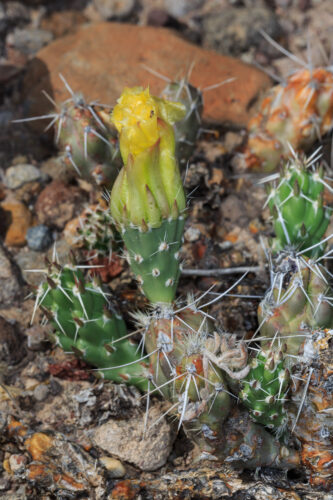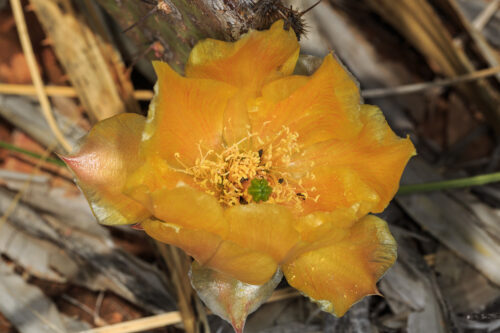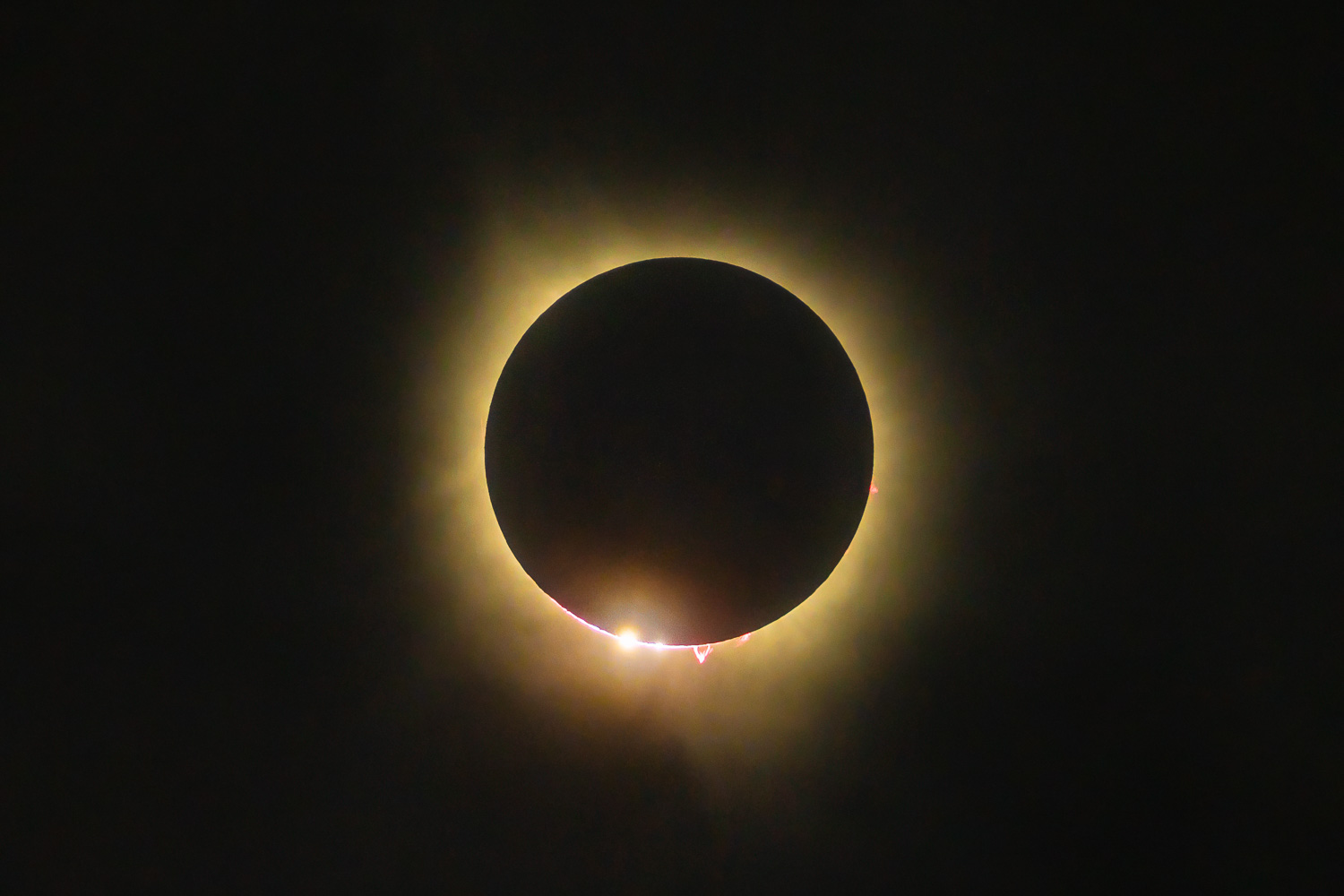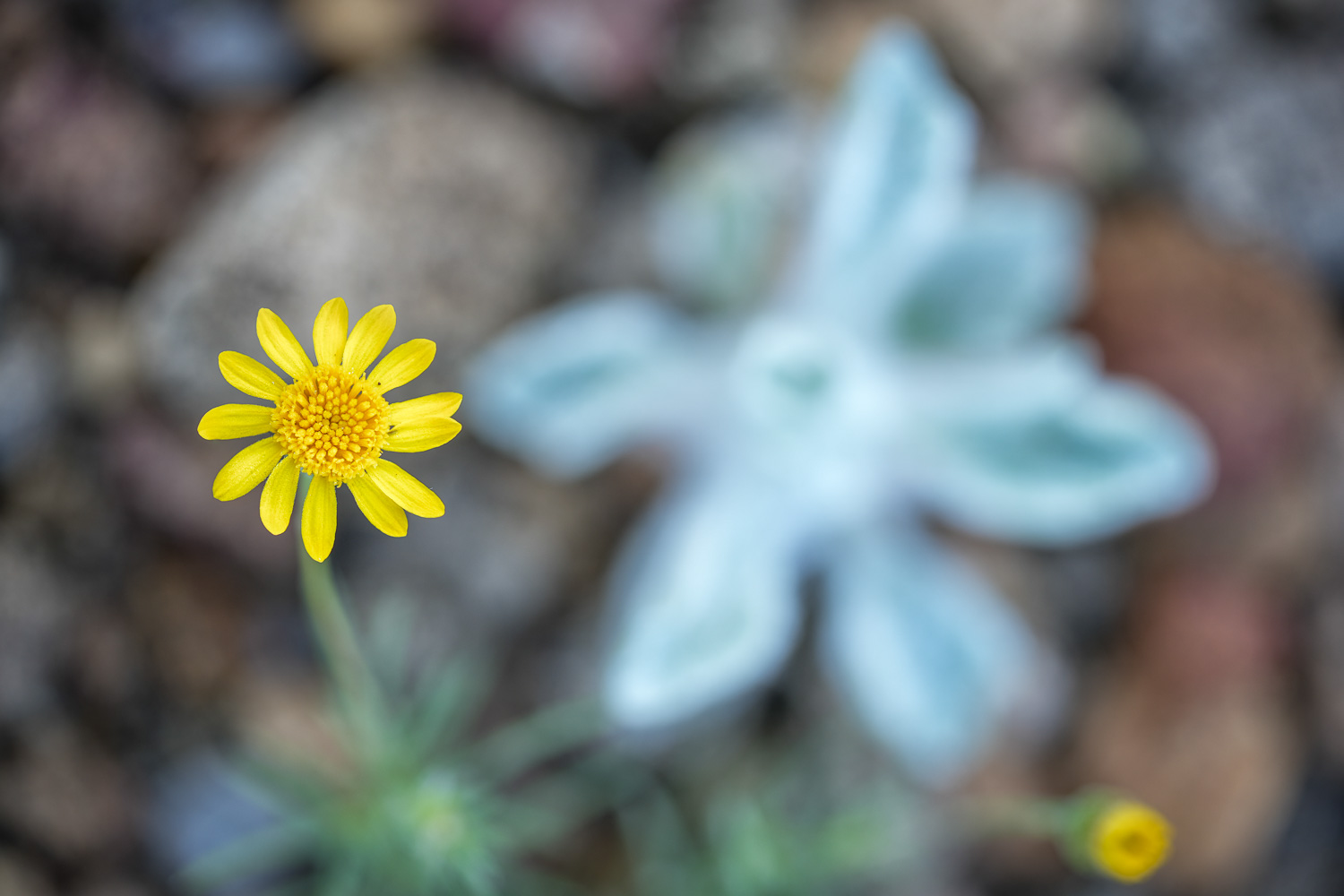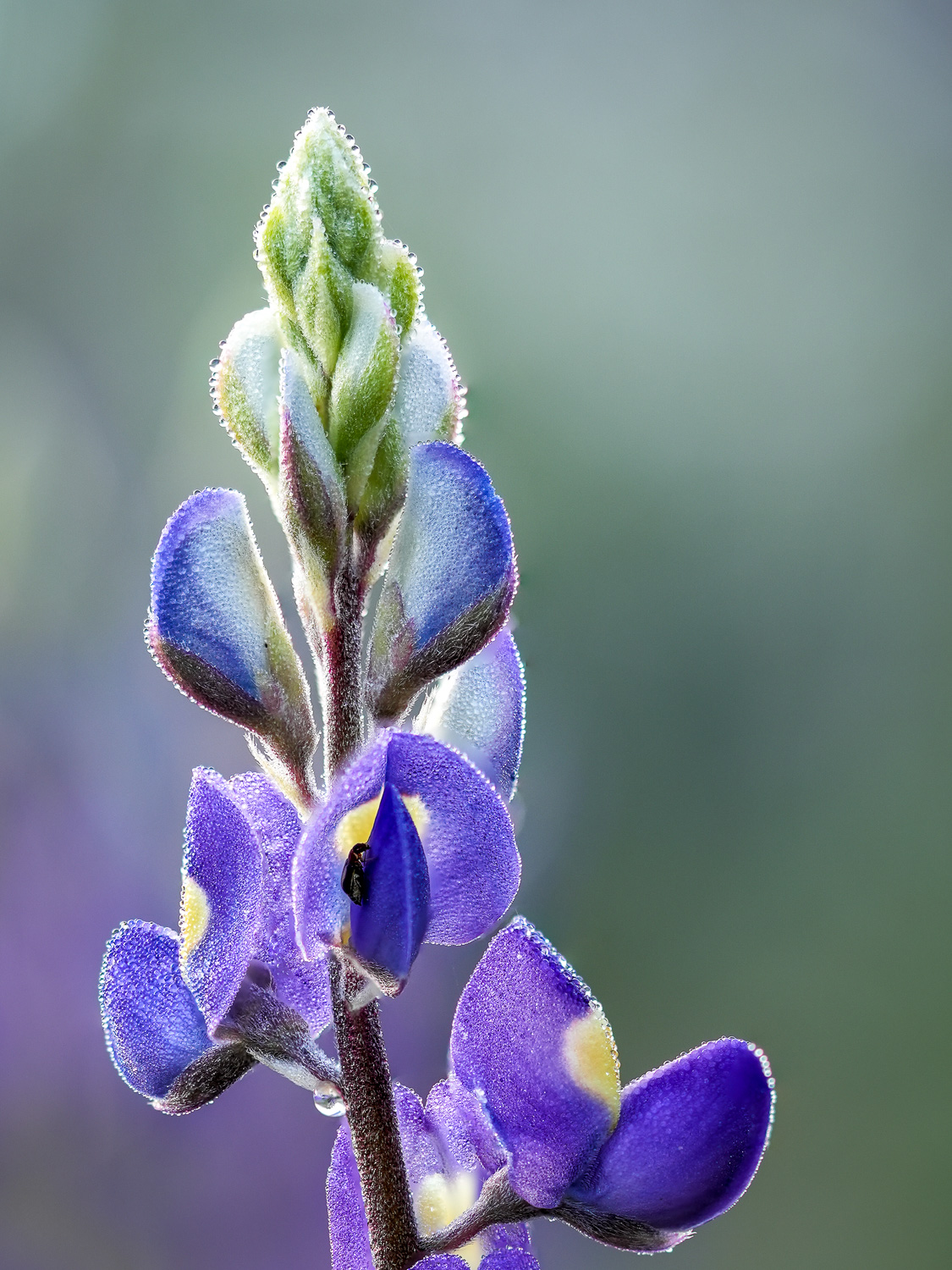Brown-Spined Prickly Pear Cactus (Opuntia phaeacantha)
Description: This prickly-pear cactus forms dense thickets 8 ft. across and up to 8 ft. tall, though usually shorter. Common to abundant in abandoned pastures and old fields on stony soil. Forms low patches of flat joints, stem segments, or horizontal lines of 3 or more joints standing on edge, some tinged reddish-purple in winter. Spines of 2 kinds: one kind 1/2 to 2 inches long and single, or 2 or 4 together, gray to brown or yellowish, sometimes pointing downward, and the other kind minute ones in dense oval clusters from which the long spines arise. Flowers showy, yellow, often with a red center, up to 3 inches wide, opening in April and May. Fruit fleshy, up to 2 1/4 inches long, purplish, flattened to concave at the apex, tapering to the base.
Family: Cactaceae
Synonym(s): Opuntia arizonica, Opuntia canada, Opuntia charlestonensis, Opuntia dulcis, Opuntia engelmannii var. cycloides, Opuntia gilvescens, Opuntia mojavensis, Opuntia phaeacantha var. brunnea, Opuntia phaeacantha var. camanchica, Opuntia phaeacantha var. major, Opuntia phaeacantha var. mojavensis, Opuntia phaeacantha var. nigricans, Opuntia phaeacantha var. phaeacantha, Opuntia phaeacantha var. superbospina, Opuntia superbospina, Opuntia woodsii
USDA Symbol: OPPH
Duration: Perennial
Habit: Cactus/Succulent
Size Class: 3-6 ft.
Bloom Color: Red, Yellow, Orange
Bloom Time: Apr, May, Jun, Jul
Water Use: Low
Light Requirements: Part Shade
Soil Moisture: Dry
Bloom Notes: Soil Description: Sandy or rocky soils. Sandy, Sandy Loam, Medium Loam, Clay Loam, Clay
Warning: These cacti have sharp spines, as well as tiny barbed hairs, called glochids that can be difficult to remove from the skin.
ATTRIBUTION: All of the Texas Wildflower images in this post are copyrighted and are the exclusive property of Terry B. Kahler. Reproduction without explicit written consent is prohibited. Some of the information contained in this section was taken from the Lady Bird Johnson Wildflower Center website and is being used under their terms of use. Redistribution from this site is prohibited. Additional information contained in this section was taken from the USDA website including the USDA code.
